There is a people's war. How to save Moscow from the Nazis
After the first stage of the operation "Typhoon" was carried out, the Nazis were going to pursue the remnants of the defeated troops to Moscow, and then take the Soviet capital. Hitler and his generals planned to level Moscow and Leningrad, which led to the destruction of the majority of the population of the largest Soviet cities.
October 6, 1941, when the 3rd and 4th tank the groups united east of Vyazma, taking large forces of the Red Army into the encirclement ring, the Commander-in-Chief of the Ground Forces of Germany, General Field Marshal Brauchich, Chief of the General Staff Colonel-General Halder and Chief of the Operations Division of this headquarters, arrived in Orsha in the Army Group Center to its commander von Bock Heusinger. The German command coordinated the further actions of the troops.
October 7 1941 of the year Brauchitsch gave the order: “To chase in the direction of Moscow”. Guderian's 2 Panzer Army moved toward Tula, Weish's 2 Army was to destroy the surrounded Soviet troops, Kluge's 4 Army and Göpner's 4 Panzer Group attacked the Mozhaisk direction, Strauss's 9 Army with the 3-th tank group on the Kalinin direction. Thus, the 2-I and 3-I tank groups were to cover Moscow from the south and north, and the 4-group came from the front.
The Nazis did not doubt the success. On October 12, the Army Ground Forces Command gave an indication to Army Group Center about the procedure for capturing Moscow and dealing with its population. "The Fuhrer again decided," said this directive, "that Moscow’s surrender should not be accepted, even if it is offered by the enemy." It was further stated: "Anyone who tries to leave the city and go through our positions must be fired upon and driven back." It was allowed to leave only small passages for the care of the population in internal Russia. “And for other cities, the rule should be that to capture them, they should be smashed by shelling and air raids, and the population should be put to flight. It would be completely irresponsible to risk the lives of German soldiers to save Russian cities from fires or to feed their population at the expense of Germany. The more the population of Soviet cities rush into internal Russia, the greater the chaos in Russia will increase and the easier it will be to manage the occupied eastern regions and use them. This instruction of the Fuhrer should have been brought to the attention of all commanders. ”
Nazi propaganda trumped victory in Germany and broadcast it to the whole world. The newspaper Felkischer Beobachter of October 13 reported: “The advancing German units are marching and rolling eastward on an extensive front. There are no words to describe the size of the Soviet defeat! ”Goebbels declared that the war in the East had been won, and the Red Army had been virtually destroyed. Many German generals were also set up. General G. Blumentrit (Chief of Staff of the 4 Army) subsequently wrote: “It seemed that Moscow was about to fall. In the Army Group "Center" all became great optimists. From Field Marshal von Bock to the soldier, everyone hoped that we would soon march through the streets of the Russian capital. Hitler even created a special demining team that was supposed to destroy the Kremlin. ”
On October 14, the command of the Army Group “Center” issued an order to continue operations against Moscow, in which it was noted: “The enemy in front of the army group was defeated. Remains retreat, going over to counterattacks. An army group is chasing the enemy. ” The 4 Army, together with its subordinate 4 tank group, was to strike in the direction of Moscow without delay, in order to smash the Soviet forces opposing it and tightly surround the capital of the USSR from the south, west and north. 2-th tank army ordered, developing an offensive, to cover Moscow from the southeast, and later from the east. "The ring of the encirclement of the city must ultimately be narrowed to the District Railway." The 2 th field army was supposed to be the main force to attack Elets and Bogoroditsk, covering the southern flank of the 2 th tank army. The 9-I field army and the 3-I tank group attacked bypassing Moscow from the north. Thus, the German command planned to complete the Moscow operation in October, finally breaking the resistance of the Red Army.
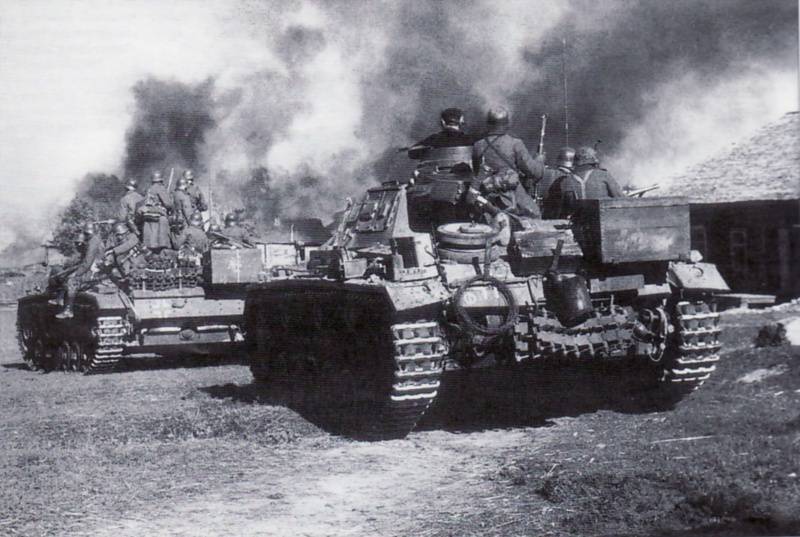
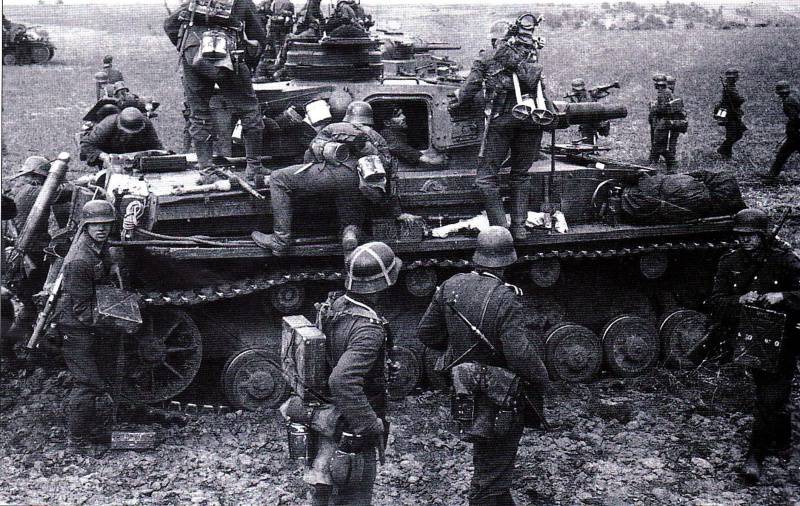
The actions of the Soviet command. Front recovery
In the meantime, the Supreme Headquarters took emergency measures to restore the front and save the capital. First of all, it was necessary to close the gap in the south-western approaches to Moscow and to do this, form a new grouping of troops.
The enemy could only be stopped on the Mozhaisk line. It was supposed to be the main line of defense of the Western Front. October 6 Bid Mozhaisk line led to alert status. From that day, troops from the Reserve Headquarters, as well as from the North-Western and South-Western fronts, began to move there. The first to arrive were three rifle divisions - 316-I, 32-I and 312-I. At the same time, there was an urgent mobilization of all the forces that could be thrown in to cover the most important areas and roads leading to Moscow. For this, military schools, institutes, academies, NKVD troops, parts of the garrison, located in the capital and the Moscow region, were raised, and fighter battalions were formed. On alert, the infantry and artillery schools of Podolsk, the Moscow Lenin Military Academy and the Military Political Academy were raised, receiving orders to take up defense under Maloyaroslavets and Mozhaisk. The combined regiment of the military school named after the Supreme Soviet of the RSFSR, raised on alert at Solnechnogorsk, as a part of 1, thousand cadets with 4 guns went out to Volokolamsky fortified area. It was only a part of the forward detachments, which in the most critical days advanced to the most dangerous directions and took upon themselves the blow of the enemy.
So, October 5 around 2 thousand artillery cadets and 1,5 thousand cadets of Podolsk infantry schools were removed from classes, alerted and directed to the defense of Maloyaroslavets. In the same direction, a detachment of Major I. G. Starchak, the chief of the paratrooper service of the Western Front, was holding the defense. It was formed from border guards and prepared to fight in the rear of the enemy. The combined squad of cadets was assigned the task of blocking the path of the Germans at the Ilinsky combat site on 5 - 7 days, until the reserves from the depths of the country were suitable. October 6 cadets arrived at the Ilinsky combat area and occupied the defense along the rivers Luzha and Vypryka from the village of Lukyanovo to Malaya Shubinka. For several days, the cadets held back the German offensive. As a result of the fierce battles, few heroes survived, but with their heroic self-sacrifice they thwarted the plan to quickly capture Maloyaroslavets and won the time for organizing the defense on the approaches to Moscow. October 16 German troops captured the defensive lines on the Ilinsky combat sector, and almost all the cadets who held the defense in this sector, were killed. October 20 surviving cadets began to withdraw by order of command.
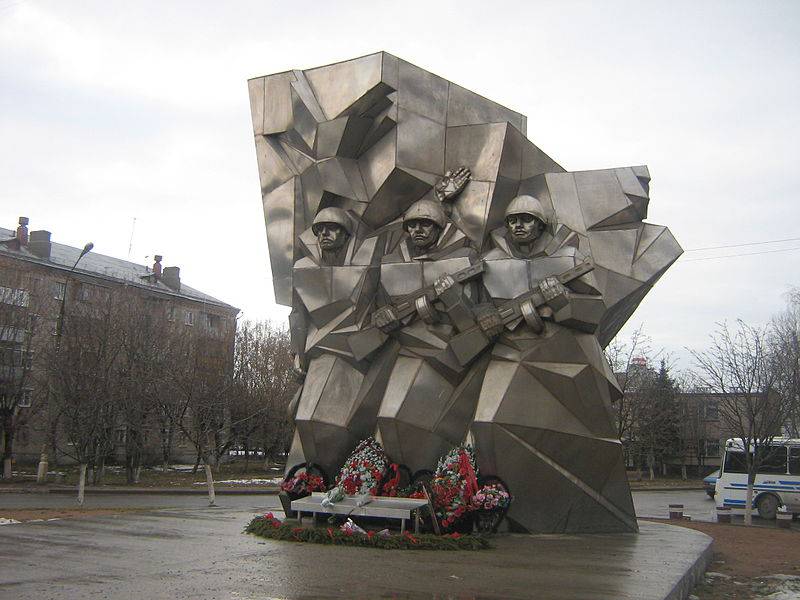
Monument to Podolsk cadets in the city of Podolsk
On the basis of the existing fortified areas, combat areas were formed, for the management of which the commander of the Moscow Military District formed the operational group of the district headquarters headed by Major General A.I. Kudryashov. October 9 Stake created the front of the Mozhaisk line of defense, which directly subordinated Stake. The front commander was Lieutenant-General P. A. Artemyev, head of the Moscow Military District, divisional commissar KF Telegin became a member of the Military Council. As part of the front, the 5 Army was formed, led by Major General D. D. Lelyushenko. At the same time, the 26 Army under the command of Major-General Tank troops A.V. Kurkin was deployed in the Oryol sector. The core of the army was the 1 Guards Corps. The army was directly subordinate to the headquarters.
In order to unite the efforts of the troops that covered Moscow from the west and restore order to the retreating troops, the State Defense Committee (STT) and Headquarters transferred the Reserve Front troops to the Western Front on October 10. The front was headed by G. K. Zhukov. Colonel-General I. S. Konev (former head of the Western Front) became his deputy, Lieutenant-General V. D. Sokolovsky was appointed Chief of Staff, and N. A. Bulganin was a member of the Military Council. “It was necessary,” noted Zhukov, “to urgently create a solid defense at the Volokolamsk – Mozhaisk – Maloyaroslavets – Kaluga line; develop defense in depth; to create second echelons and reserves of the front, so that they can be maneuvered to strengthen the vulnerable parts of the front ". Continuing to build up the power of the Western Front, the October 12 headquarters transferred the Mozhaisk defense line to its structure.
Thus, not yielding to panic and retaining the will and determination to fight to the end, the Soviet military and political leadership created a new front of defense at the Mozhaysk border during the week. Of course, he was not yet sufficiently organized and united, not all the troops had yet arrived, but the Red Army could already engage the enemy in a decisive battle for Moscow.
The surrounding forces of the Western, Reserve and Bryansk fronts played a major role in this. So, the three armies of the Bryansk Front (3-I, 13-I and 50-I) at the time broke through to the east, tying down the troops of the Weish and Guderian armies. By October 23 they broke from the environment and took new positions. The 19-th, 20-th, 24-th and 32-th troops of the Western and Reserve fronts also did not fold weapons and fought, trying to get through to their own. These armies were bled to death and for the most part died, but won precious time — a week. As Zhukov recalled: “Thanks to the perseverance and resilience that our troops displayed, who fought in the surroundings in the Vyazma region, we won precious time for organizing defense on the Mozhaysk line. The blood and casualties suffered by the troops of the encircled grouping were not in vain. ” The main forces of the tank and field German armies were shackled by heavy fighting near Vyazma, while separate corps and armies sought to continue the offensive. This allowed the Soviet command and army to organize a new line of defense, to tighten up reserves and troops from other directions.
At this time, the Headquarters threw troops from the reserve and neighboring fronts to the Mozhaisk line. 11 rifle divisions, 16 tank brigades, more than 40 artillery regiments and other units were transferred here. Here came the parts that escaped from the environment. The 16-th, 5-th 43-th and 49-th army were re-formed. In total, in the middle of October, Moscow was covered by about 90 thousand people. Of course, to create a solid powerful defense of these troops was not enough. Therefore, all these forces were used to cover the most important areas: Volokolamsk, Mozhaysk, Maloyaroslavets and Kaluga. The main artillery and anti-tank weapons were focused on these areas.
By October 13, the troops of the Western Front turned to fight the enemy. The 16 Army under the command of Lieutenant General K. K. Rokossovsky was located in the Volokolamsk fortified area, in Mozhaisky - the 5 Army I, Major General D. D. Lelyushenko (after his injury, from October 18, Major General L. A. Govorov). The 43-I army of Lieutenant-General Major-General S. D. Akimov stood in the Maloyaroslavets direction (from October 30 Major-General KD Golubev), and in Kaluga there was Lieutenant-General IG Zakharkin. M. G. Yefremov's 49 army was transferred to the Naro-Fominsk region. On October 33, the Western Front Military Council ordered these armies to go over to stubborn defense and prevent the enemy forces from breaking through to the east. At the same time, in the rear of the troops of the first echelon of the Western Front, extensive engineering work was carried out to create defense in depth, anti-tank barriers were built. On the main directions reserves.
Given the length of the front, as well as the difficulties encountered in managing the troops of the Kalinin grouping, on October 17, the headquarters formed the Kalinin front. It consists of 22-I, 29-I, 31-I and 30-I armies. The front was led by Colonel-General I. S. Konev. The Kalinin Front was supposed to cover Moscow from the northwest.
In general, the situation was extremely difficult. It was necessary at any cost to stop the enemy, who rushed to Moscow. Bring down the pace of its occurrence and gain time to deploy reserves Reserves. It was necessary to solve this problem in an extremely difficult situation. There was no solid front line. Our troops covered only the main directions. The enemy’s tank groups, penetrating deep into our defenses, forced our troops to retreat to new frontiers. The enemy had superiority in the air (except for the Moscow region). Together with the army, many thousands of civilians went to the east. People, animals, carts, cars moved in a continuous stream along the roads. This complicated the work of the rear and interfered with the maneuver of the Soviet troops.
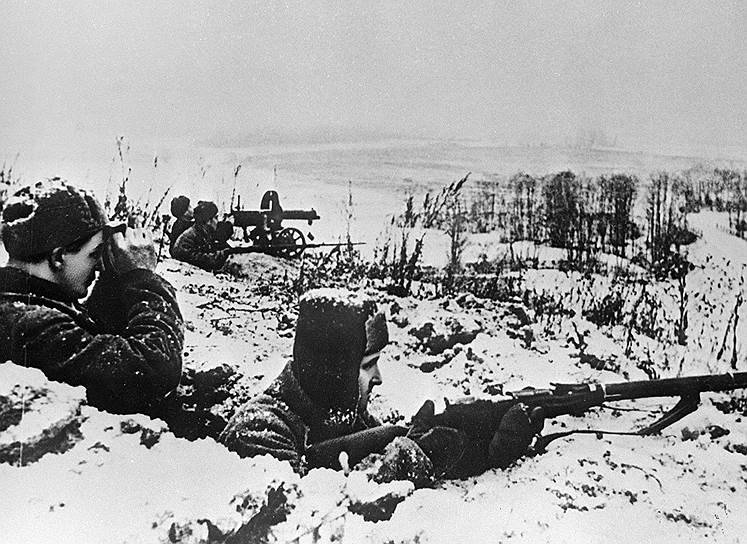
Moscow turns into a fortress
At the same time they were preparing the defense of Moscow itself. October 15 The USSR State Defense Committee decided to evacuate Moscow. The next day, evacuation from Moscow (to Kuibyshev, Saratov, Molotov and other cities) of the offices of the General Staff, military academies, people's commissariats and other institutions, as well as foreign embassies began. Mining plants, power plants, bridges and other major objects were mined. Removed especially important state values.
The enemy’s approach to Moscow allowed the Germans to raid the city day and night and cover the bombers with fighters. Therefore, for the air defense of the capital in the Moscow region, additional fighter forces were concentrated aviation and anti-aircraft artillery units. Thousands of citizens actively trained in air defense and incendiary bombs were no longer dangerous for Muscovites. In addition, the threat of an enemy breakthrough to Moscow itself forced to attract anti-aircraft artillery units and air defense forces in the fight against enemy ground forces. In an order to the Headquarters, the troops of the 1st Air Defense Corps said: “To all anti-aircraft batteries of the Moscow Air Defense Corps located to the west, south-west and south of Moscow, in addition to the main task of repelling an air enemy, be prepared to repel and destroy the bursting tank units and live enemy forces. " Later, in the battles on the near approaches to the capital, the air defense forces rendered great assistance to the ground forces in repelling German attacks.
October 16 in Moscow broke out a panic. However, she quickly coped with and put things in order with the capital. Every serious breach of discipline and looting attempts was decisively suppressed. October 20 in Moscow and adjacent areas of the GKO decree was introduced a state of siege. Most of the Muscovites, feeling the will and determination of the leadership to stand up to the end, joined the defense of the capital. In the summer, the 12 national militia divisions were formed. In response to the party’s call, many thousands of Communists and Komsomol members went to the front as political workers, by their example raising the fighting spirit of the fighters. Hundreds of thousands of Muscovites daily worked on the construction of defensive lines. Only on the internal defense belt in October - November 1941 worked up to 250 thousand people, mostly women and teenagers. With their own hands, these people took out more than 3 million cubic meters of land, erecting many kilometers of anti-tank ditches, trenches, communication lines, etc.
In order to strengthen the near approaches to Moscow, the GKO 12 of October decided to build a third defensive line, which included a support line and two defense lines — the main and the city line. The support strip was supposed to run parallel to the rear line of the Mozhaisk line from the Moscow-Volga canal in the north to the Oka river near Serpukhov in the south. The main defensive line was planned to be built in the shape of a semicircle, which would encircle Moscow within a radius of 15-20 km. This milestone was divided into three sectors: the north-west, the west and the south-west, the sectors were divided into combat sectors. The city frontier consisted of three lanes: the first lane passed along the ring railway, the second - along the Garden Ring, the third - along the boulevard ring. The entire defense system at the close approaches was called the Moscow Defense Zone. The command was entrusted to the leadership of the Moscow VO. At his disposal were the troops of the Moscow garrison, the fighter battalions of the city (they were formed in the summer and used to maintain order in the city).
Also accelerated the formation of spare parts and working battalions of Muscovites. In the evening of October 13, party meetings were held in all primary organizations at which the situation was discussed and the communists of enterprises and institutions of the capital declared their readiness to take up arms in order to ruthlessly fight the enemy. Immediately began to record volunteers in the communist companies and battalions. This impulse was supported by non-partisan workers and employees. In just three days, about 12 thousand volunteers were assembled, who brought separate companies and battalions into 25. Having received the task of covering the main thoroughfares leading to the city, in the morning of October 17, volunteers began to occupy combat sites at the nearest approaches to the capital and its outskirts.
At the same time, the State Defense Committee instructed the Military Council of the Moscow Military District, together with the city party committee and the Moscow Council, to speed up the construction of fortifications at the approaches to the capital, to take measures to maintain order in the city and to ensure the normal operation of industry, transport, communications and trade in Moscow.
Workers and engineers worked valiantly and selflessly at the enterprises that remained in Moscow (they evacuated a lot). There were not enough people, but the rest were able to adjust the output of military products in the shortest possible time. Due to the lack of qualified specialists for work in the workplace, women and adolescents were increasingly attracted. At the Moscow Automobile Plant organized the production of Shpagin submachine guns (PPSH). At the Second Watch Factory, fuses for mines were produced. The trolleybus park of the Leningrad region made grenades. "Sickle and Hammer" and "Red Proletarian" repaired tanks. Ammunition was also produced there. Car fleets restored fighting vehicles. Confectionery factory "Rot-Front" produced food concentrates. Small businesses made grenades and fuses.
Thus, Moscow became the arsenal of the Western Front, its strong rear frontier, fortress and base, which supported the advanced units with human reserves, equipment, weapons and ammunition. The unanimity with which the citizens supported the Red Army became a powerful moral factor (there is nowhere to retreat — behind Moscow! ”).
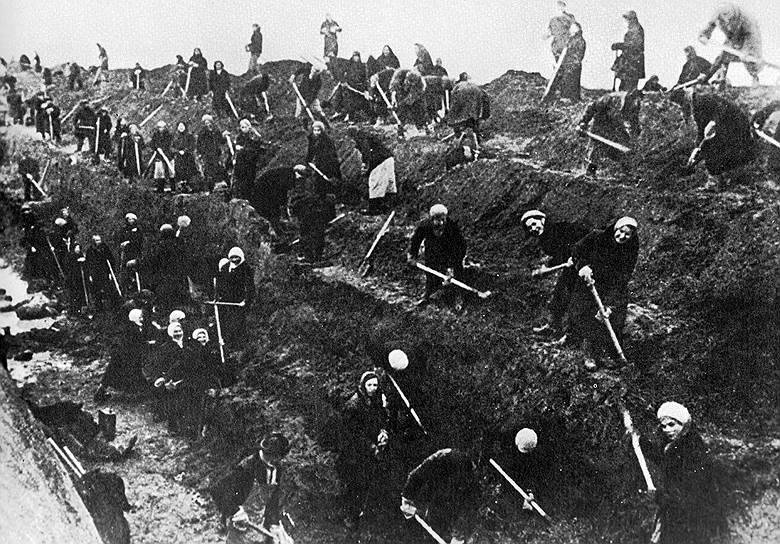
To be continued ...
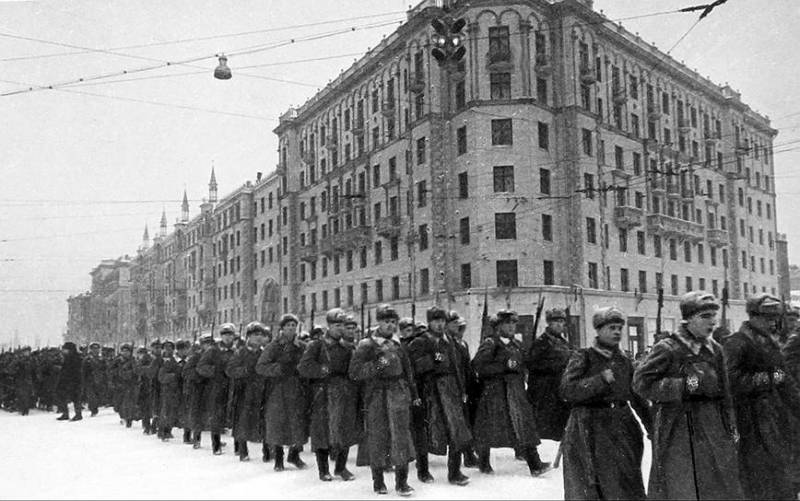
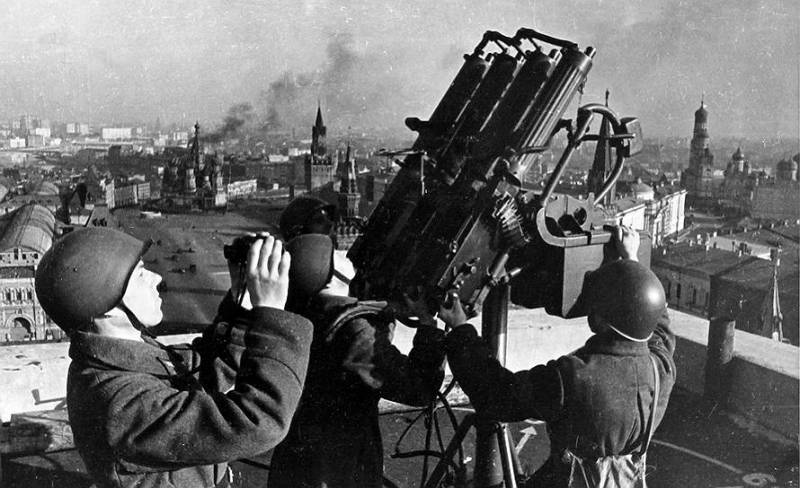
Information